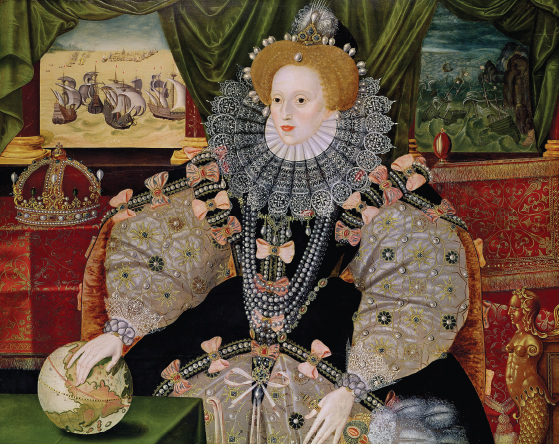Puritan Origins: The English Reformation
Printed Page 84
The religious roots of the Puritans who founded New England reached back to the Protestant Reformation, which arose in Germany in 1517 (see "The Protestant Reformation and the Spanish Response" in chapter 2). The English church initially remained within the Catholic fold. Henry VIII, who reigned from 1509 to 1547, saw that the Reformation offered him an opportunity to break with Rome and take control of the church in England. In 1534, Henry formally initiated the English Reformation. At his insistence, Parliament outlawed the Catholic Church and proclaimed the king “the only supreme head on earth of the Church of England.” Henry seized the vast properties of the Catholic Church in England as well as the privilege of appointing bishops and others in the church hierarchy.
 Dissenters from the Church of England who wanted a genuine Reformation rather than the partial Reformation sought by Henry VIII. The Puritans’ religious principles emphasized the importance of an individual’s relationship with God, developed through Bible study, prayer, and introspection.
Dissenters from the Church of England who wanted a genuine Reformation rather than the partial Reformation sought by Henry VIII. The Puritans’ religious principles emphasized the importance of an individual’s relationship with God, developed through Bible study, prayer, and introspection.
 Reform effort initiated by King Henry VIII that included banning the Catholic Church and declaring the English monarch head of the new Church of England but little change in doctrine. Henry’s primary concern was consolidating his political power.
Reform effort initiated by King Henry VIII that included banning the Catholic Church and declaring the English monarch head of the new Church of England but little change in doctrine. Henry’s primary concern was consolidating his political power.

The fate of Protestantism waxed and waned under the monarchs who succeeded Henry VIII. In 1558, Elizabeth I, the daughter of Henry and his second wife, Anne Boleyn, became queen. During her long reign, Elizabeth reaffirmed the English Reformation and tried to position the English church between the extremes of Catholicism and Puritanism. Like her father, she desired a church that would strengthen the monarchy and the nation. By the time Elizabeth died in 1603, many people in England looked on Protestantism as a defining feature of national identity.
The English Reformation and Puritanism
> The English Reformation and Puritanism
- Henry VIII took advantage of the Protestant Reformation in Europe to break with Rome and take control of the Church of England.
- Reformation brought political and religious turmoil to England; many English Catholics wanted to revoke the English Reformation, while other English people wanted a thorough Reformation.
- The Puritans wanted to eliminate what they considered the offensive features of Catholicism that remained in the religious doctrines and practices of the Church of England.
- Puritans wanted to do away with the rituals of Catholic worship and instead emphasize an individual’s relationship with God, developed through Bible study, prayer, and introspection.
- All Puritans shared a desire to make the English church thoroughly Protestant.
When Elizabeth’s successor, James I, became king, English Puritans petitioned for further reform of the Church of England. James authorized a new translation of the Bible, known ever since as the King James Version. However, neither James I nor his son Charles I, who became king in 1625, was receptive to the ideas of Puritan reformers. James and Charles moved the Church of England away from Puritanism. They enforced conformity to the Church of England and punished dissenters. In 1629, Charles I dissolved Parliament — where Puritans were well represented — and initiated aggressive anti-Puritan policies. Many Puritans despaired about continuing to defend their faith in England and made plans to emigrate to Europe, the West Indies, or America.
CHAPTER LOCATOR
Why did the Puritans immigrate to North America?
How did New England society change during the seventeenth century?
What was distinctive about the middle colonies?
What was the connection between the colonies and the English empire?
Conclusion: Was there an English model of colonization in North America?
 LearningCurve
LearningCurve
Check what you know.